To kick off my look this week at the best prospects in the minor leagues, I've ranked all 30 MLB farm systems from top to bottom, considering only the players who are currently in the systems and have not yet exhausted their rookie year of eligibility. (I use the same criterion for the individual player rankings that will be posted over the next few days.)
There's a real concentration of talent among the top few farm systems, teams that have been bad in recent years and stockpiled prospects, plus a couple of clubs that have wielded their financial might to bolster their farms. The top few clubs can all boast a dozen or more prospects with decent chances to become average big leaguers or better, whereas at the bottom of the list, you might find only one or two such prospects per club. (My top 10 rankings by team will be released early next week.) The rankings favor teams with more of those "average big leaguer or better" prospects because of the scarcity of those players and the increasing cost of a fourth starter or just an average everyday player in free agency. Quality relievers and bench players are nice to have in your system -- it sure beats paying for them on the open market -- but they don't measure up to clubs that have lots of potential grade 50s (on the 20-80 grading scale) in their systems.
Let's get to the rankings.
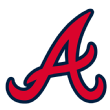 1. Atlanta Braves
1. Atlanta Braves
2015 rank: 6
Players in top 100 (2016): 7
This system was among the bottom five just two years ago after several bad drafts and questionable player development, but a series of trades -- including several fleecings of the Diamondbacks -- has stocked the system with pitching depth that is the envy of the industry. They tied for the most players in my top 100 and had a couple of other players who could make cases for inclusion, and their 11th- to 20th-ranked prospects still include a lot of prospective major league value. It has been a remarkable turnaround for general manager John Coppolella and his front office, and the future is even brighter with the team having the third overall pick in June's draft. The team's agreement to sign Venezuelan prospect Kevin Maitan on July 2 is the worst-kept secret in the industry.
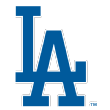 2. Los Angeles Dodgers
2. Los Angeles Dodgers
2015 rank: 10
Players in top 100 (2016): 7
You can say that they bought this farm-system ranking, and you'd be right, and I don't think they'd particularly care. However, that doesn't do justice to the successful draft picks in 2013 and 2014 that line their top 10 around the various high-dollar Cuban signings (and that one Mexican lefty named Julio Urias).
 3. Minnesota Twins
3. Minnesota Twins
2015 rank: 2
Players in top 100 (2016): 7
If you'd asked me to guess wildly at these rankings before I started the research process that goes into them, I might have pegged Minnesota 10 spots too low, but this system is stacked. The Twins have high ceilings, they have probability, they have starters, they have relievers, they have lots of position players -- I guess they don't really have catching, if you want to pick nits. But for a team that runs low payrolls, they're in damn good shape.
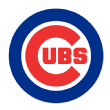 4. Chicago Cubs
4. Chicago Cubs
2015 rank: 1
Players in top 100 (2016): 6
They graduated Kris Bryant, Kyle Schwarber and Addison Russell but are still loaded with talent, albeit most of it unlikely to help before 2017. The system has long been light on arms, but there's some pitching coming if you squint hard enough into the distance.
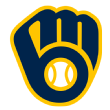 5. Milwaukee Brewers
5. Milwaukee Brewers
2015 rank: 28
Players in top 100 (2016): 4
They've gone from having the majors' worst farm system just two years ago to a top-five system resulting from a series of shrewd trades, starting with former GM Doug Melvin's work last summer to begin the rebuilding process, as well as one of the strongest draft classes in 2015.
 6. Philadelphia Phillies
6. Philadelphia Phillies
2015 rank: 25
Players in top 100 (2016): 5
The Cole Hamels trade might turn out to be the Phillies' Herschel Walker moment, trading their best asset for a huge package of prospects who look like they'll boost the major league club for years to come. The next step is maximizing their output from this year's draft, in which they hold the first overall pick.
 7. Colorado Rockies
7. Colorado Rockies
2015 rank: 8
Players in top 100 (2016): 5
This is a system full of athletes, with lots of high-upside position players and a significant contingent of hard-throwing starter prospects behind them. But there's some reliever risk on all of those starters. If any club were to value reliever prospects a bit higher, though, it probably should be the Rockies.
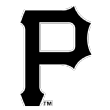 8. Pittsburgh Pirates
8. Pittsburgh Pirates
2015 rank: 7
Players in top 100 (2016): 4
For the Pirates to maintain this strong of a system with a low payroll and a highly competitive major league team is one of the more under-the-radar stories in the game over the past few years. They landed four players in the top 100 and could easily land six or seven next winter.
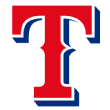 9. Texas Rangers
9. Texas Rangers
2015 rank: 11
Players in top 100 (2016): 5
Formerly a system dominated by big international signings, the Rangers have since become a more focused team in the draft, going for ceiling and hitting on an impressive fraction of their high picks, including the Lewis Brinson/Joey Gallo parlay from the 2012 draft.
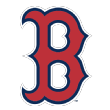 10. Boston Red Sox
10. Boston Red Sox
2015 rank: 5
Players in top 100 (2016): 4
Decimated by promotions the past two years and the recent trade for Craig Kimbrel, which cost them two top-100 prospects and two others of some value, yet big international spending and some productive drafts still have the Red Sox a top-10 system overall. Drafting Andrew Benintendi, who showed in pro ball that his huge spring for the University of Arkansas wasn't just a four-month fluke, also helped.
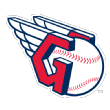 11. Cleveland Indians
11. Cleveland Indians
2015 rank: 16
Players in top 100 (2016): 4
This is a system full of projectable, young, high-ceiling arms and topped off with a couple of very promising bats but somewhat light on potential impact for 2016. I liked their 2015 draft, which focused on those projection high school pitchers over guys who throw hard now but might not have the same athleticism or repeatable deliveries.
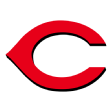 12. Cincinnati Reds
12. Cincinnati Reds
2015 rank: 17
Players in top 100 (2016): 4
I haven't been a huge fan of the returns on the Reds' recent trades other than the Johnny Cueto deal (which yielded just one prospect for these rankings), but the aggregate result is a big influx of talent on top of a system with a couple of first-round and supplemental-round picks that are looking very promising.
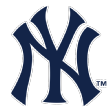 13. New York Yankees
13. New York Yankees
2015 rank: 20
Players in top 100 (2016): 4
The Aroldis Chapman deal didn't make much of a dent in the system; the Yankees bought the troubled reliever with quantity rather than quality, and a strong draft in 2015 helped make up for some recent promotions.
 14. Tampa Bay Rays
14. Tampa Bay Rays
2015 rank: 23
Players in top 100 (2016): 4
A quietly deep system, light on potential stars but full of potential regulars and back-end starters. These are the types of players the Rays will never be able to afford in free agency in their current market.
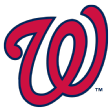 15. Washington Nationals
15. Washington Nationals
2015 rank: 9
Players in top 100 (2016): 3
A top-heavy system with a couple of potential stars, some depth in position players up the middle but a somewhat quick falloff after the first eight to 10 names. It doesn't set them up well for many trades, but you have to be a potential star to crack the lineup or rotation in D.C., and they do have a few of those prospects.
 16. New York Mets
16. New York Mets
2015 rank: 4
Players in top 100 (2016): 4
Still well-stocked with position players, but most of the pitching is gone in trades for Tyler Clippard and Yoenis Cespedes, leaving them very dependent on the health of the five young stars in the big league rotation. With a little luck, the next wave of hitters will hit Citi Field just as there are openings in the right spots in the lineup, helping them continue to compete behind their phenomenal young rotation.
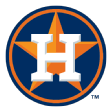 17. Houston Astros
17. Houston Astros
2015 rank: 3
Players in top 100 (2016): 4
With all the trades and promotions, the system has finally dropped out of the top 10, but it's far from barren thanks to a huge draft haul last year and big steps forward by several prospects in the system. There just isn't another Carlos Correa coming -- yet.
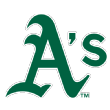 18. Oakland Athletics
18. Oakland Athletics
2015 rank: 26
Players in top 100 (2016): 2
A couple of big trades brought back four of their top-10 prospects in a system that is back on the upswing after a few fallow years. They have a bunch of guys in the 101-150 range of prospects, players who could still have real major league value but have a little less probability because of issues like contact rates.
 19. St. Louis Cardinals
19. St. Louis Cardinals
2015 rank: 13
Players in top 100 (2016): 3
This is surprisingly low for a team that has been so productive over the past decade, but they've promoted much of their top talent and are now buttressed by their international department rather than their domestic drafts.
 20. San Diego Padres
20. San Diego Padres
2015 rank: 18
Players in top 100 (2016): 2
The Padres strip-mined their system last year in a series of trades to boost the big league club but then added their new top two prospects in the trade that sent Craig Kimbrel to Boston. This year's draft will be huge for them, as they have three picks in the first 27 and six in the first 85.
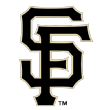 21. San Francisco Giants
21. San Francisco Giants
2015 rank: 29
Players in top 100 (2016): 1
Just one top-100 prospect but a passel of intriguing arms -- both starters and relievers -- which should offer relief to the ailing major league rotation soon and help keep the bullpen rolling (a strength of all three World Series-winning Giants teams). They keep finding value in later rounds of the draft, too, and made a big splash internationally for the first time in several years.
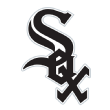 22. Chicago White Sox
22. Chicago White Sox
2015 rank: 12
Players in top 100 (2016): 1
Gradually improving thanks to some productive drafts, though they lost a little bit by trading three of their top 10 prospects for Todd Frazier (a good trade all the same). There's definitely a new emphasis on improving their player development, even if it's just to trade pieces for big league stars as was done in the Frazier deal.
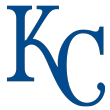 23. Kansas City Royals
23. Kansas City Royals
2015 rank: 15
Players in top 100 (2016): 2
No complaints here, as the Royals used the fruits of the system to win a World Series and another American League pennant, but they are very light on position players now, and many of their remaining pitching prospects are several years away.
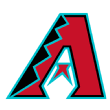 24. Arizona Diamondbacks
24. Arizona Diamondbacks
2015 rank: 14
Players in top 100 (2016): 2
Two good pitching prospects, one or two decent hitting prospects, then a big drop-off, which is what happens when you keep sending away your top draft picks in trades. They took some middling college arms last year who could surprise this year and establish themselves as top-five prospects in the system -- or look like busted picks by next winter.
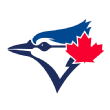 25. Toronto Blue Jays
25. Toronto Blue Jays
2015 rank: 19
Players in top 100 (2016): 1
Badly thinned out by trades over the past 18 months but saved by the sudden emergence this year of their top two prospects, one a football player who finally chose to focus on baseball full-time, the other a projection high school arm who saw his velocity shoot up last summer.
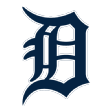 26. Detroit Tigers
26. Detroit Tigers
2015 rank: 30
Players in top 100 (2016): 1
They traded for prospects last summer, helping land their new No. 1 prospect and add a little depth to a system that had been depleted by trades in the other direction for years. It's still not a good system, but it's the first time in maybe a decade that it's trending upward, and I think the new emphasis on building from within will continue under GM Al Avila.
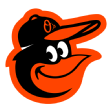 27. Baltimore Orioles
27. Baltimore Orioles
2015 rank: 22
Players in top 100 (2016): 2
Hunter Harvey has been out for a year and a half; Dylan Bundy can't stay healthy and could be done as a starter; and their best prospect is a catcher who might be a singles hitter. Their upside was almost entirely in short-season last summer, but they wouldn't be in this situation if the last wave of arms had panned out.
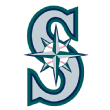 28. Seattle Mariners
28. Seattle Mariners
2015 rank: 21
Players in top 100 (2016): 1
Their best prospect took a big step back in 2015; their top pitching prospect has huge upside but hasn't performed and has major makeup questions; and their draft was my least favorite of all 30 in 2015. New GM Jerry Dipoto has the unenviable task of keeping the big league club competitive while trying to restock the fallen system.
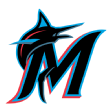 29. Miami Marlins
29. Miami Marlins
2015 rank: 24
Players in top 100 (2016): 1
They barely placed one guy on the top 100, and their No. 2 prospect is probably a reliever when it's all said and done. They have some high-upside bats in the lowest levels, but they're low-probability prospects, and their pitching is light everywhere.
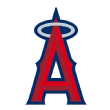 30. Los Angeles Angels
30. Los Angeles Angels
2015 rank: 27
Players in top 100 (2016): 0
I've been doing these rankings for eight years now, and this is by far the worst system I've ever seen. They traded their top two prospects in the Andrelton Simmons deal and had no one remotely close to top-100 status. They need a big draft this year to start to restock the system or we're going to start talking about whether it's time to trade Mike Trout.
